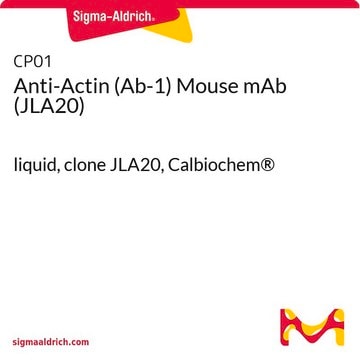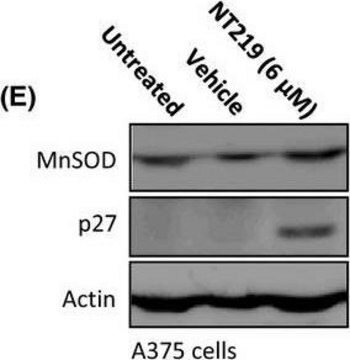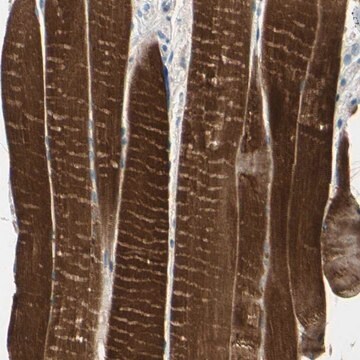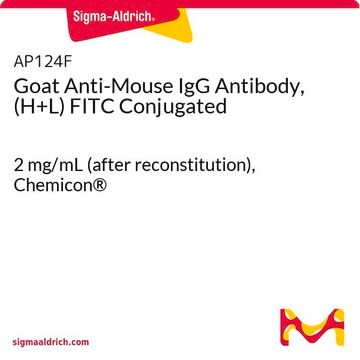MABT1333
Anti-pan-Actin Antibody
mouse monoclonal, 2A3
Sinonimo/i:
Skeletal muscle alpha-actin, Smooth muscle alpha-actin, Cytoplasmic beta-actin, Cardiac muscle alpha-actin, Cytoplasmic gamma-actin, Smooth muscle gamma-actin
Scegli un formato
Scegli un formato
About This Item
Prodotti consigliati
Nome del prodotto
Anti-pan-Actin Antibody, clone 2A3, clone 2A3, from mouse
Origine biologica
mouse
Forma dell’anticorpo
purified immunoglobulin
Tipo di anticorpo
primary antibodies
Clone
2A3, monoclonal
Reattività contro le specie
human, rat, monkey, yeast, hamster, Drosophila, mouse
Confezionamento
antibody small pack of 25 μL
tecniche
western blot: suitable
Isotipo
IgG1κ
N° accesso NCBI
N° accesso UniProt
modifica post-traduzionali bersaglio
unmodified
Descrizione generale
Specificità
Immunogeno
Applicazioni
Cell Structure
Qualità
Western Blotting Analysis: A 1:500 dilution of this antibody detected Actins in HeLa cell lysate.
Descrizione del bersaglio
Stato fisico
Stoccaggio e stabilità
Altre note
Esclusione di responsabilità
Non trovi il prodotto giusto?
Prova il nostro Motore di ricerca dei prodotti.
Certificati d'analisi (COA)
Cerca il Certificati d'analisi (COA) digitando il numero di lotto/batch corrispondente. I numeri di lotto o di batch sono stampati sull'etichetta dei prodotti dopo la parola ‘Lotto’ o ‘Batch’.
Possiedi già questo prodotto?
I documenti relativi ai prodotti acquistati recentemente sono disponibili nell’Archivio dei documenti.
Filtri attivi
Il team dei nostri ricercatori vanta grande esperienza in tutte le aree della ricerca quali Life Science, scienza dei materiali, sintesi chimica, cromatografia, discipline analitiche, ecc..
Contatta l'Assistenza Tecnica.








